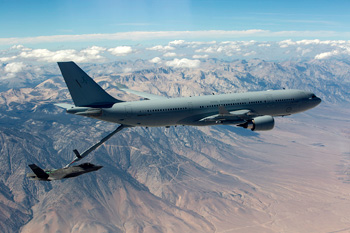INDIAN ARMED FORCES CHIEFS ON
OUR RELENTLESS AND FOCUSED PUBLISHING EFFORTS

SP Guide Publications puts forth a well compiled articulation of issues, pursuits and accomplishments of the Indian Army, over the years

I am confident that SP Guide Publications would continue to inform, inspire and influence.

My compliments to SP Guide Publications for informative and credible reportage on contemporary aerospace issues over the past six decades.
FDI in Defence Remains elusive
 |
By Lt. General P.C. Katoch Former Director General of Information Systems, Indian Army |

In a written reply given to the Parliament in response to a question about FDI in defence, Defence Minister Manohar Parrikar said, “The actual flow of foreign direct investment (FDI) takes time to mature. From August 2014 to February 2016, a total amount of 112.35 lakh (1.12 crore) has come into the country as FDI in the defence sector”. This actually amounts to a pittance compared to the overall FDI coming in and the Make in India campaign. According to Nomura brokerage firm of Japan, FDI in India during FY 2015 was US$ 34.9 billion; 61.6% jump from US$ 21.6 billion during 2014.
The credit obviously goes to the ‘Make in India’ call given by Prime Minister Narendra Modi. The Economic Survey released in February this year states that FDI in India has received a dramatic boost from the launch of the Make in India initiative. After the September 2014 launch of ‘Make in India, there was some 40% increase in FDI during October 2014-June 2015 over similar period in previous year. Under the Make in India program, the government has awarded 56 defence manufacturing permits to private sector entities in the past one year, after allowing 49% FDI in the defence sector in August 2014, compared with 47 granted in the preceding three years. There is no doubt that funds flowing in through FDI are also suspect with ongoing investigations in the VVIP helicopter scam indicating possibility of bribe money of some 100-120 crore having come through FDI. Significantly, the Economic Survey mentioned herein also states, “These inflows need perhaps to be examined more closely to determine whether they constitute actual investment or are diversions from other sources to avail of tax benefits under the Double Tax Avoidance Agreement that these countries have with India.”
Notwithstanding this, there is a need to seriously examine why the defence sector has failed to attract FDI even in the backdrop that when the Modi government took over in May 2014, it hiked the FDI limit from 26% to 49% in defence equipment manufacturing, and also announced the ‘Make in India’ campaign to encourage Indian industry to take over some sections of manufacturing which were being imported. Significantly, the Parliament had also approved FDI in defence sector beyond 49% on case-to-case basis, obviously for state-of-the-art products. The hesitation of FDI in defence is because of multiple factors. The DPP-2016 issued is incomplete: criteria for choosing strategic partners are not defined; whether wholly-owned subsidiaries of foreign companies qualify as Indian Offset Partners (IOPs) is not clear; detailed offset guidelines not notified; no changes mentioned to the Technology Perspective and Capability Roadmap (TPCR) in vogue past decade and a half which hasn’t helped much; no worthwhile changes in other procedures including the Fast Track Procedure (FTP); no changes in the Technical Oversight Committee (TOC) mechanism in terms of combining it with TEC or Staff Evaluation Committee and raising its threshold from the existing INR 300 crs as also dropping of the DPSU member as recommended by the defence private industry, and; chapter containing the revised standard contract document as well as various annexure and appendices has not been released.
Next, just facilitating foreign companies to bypass government and the Foreign Investment Promotion Board (FIPB) in finalizing defence investment deals is unlikely to suffice. The issues of IPR and the number and guarantee of what would be absorbed in India too need to be addressed. Going by the FICV experience private is apprehensive about sincerity of government in providing level playing field, OFB having been included from an erstwhile empanelment despite fresh EoI issued in March 2014. Significantly, while Parliament approved FDI in defence beyond 49% on case to case basis in 2014, MoD has still to define what “state-of-the-art”. This is an atrocious state of affairs, which has only come to light when FIPB was questioned about the Tata-AugustaWestland JV to manufacture helicopters in India. Obviously all cases pertaining to FDI in defence beyond 49% are stuck because of the same reason. So, when Defence Minister Parrikar told Parliament “The actual flow of foreign direct investment (FDI) takes time to mature”, it obviously includes in-house red-tape that shows no sign of abating. The Modi government needs to address these issues on priority.





